Choosing the best affordable camera for landscape photography means making some compromises on features you don’t necessarily need and identifying those which are most important to your work. For landscape photography, you’ll want to focus in particular on resolution.
You’ll want to find the most megapixels for your money when choosing the best affordable camera for landscape photography. The camera you choose doesn’t necessarily need to have a full-frame sensor, but more resolution means more detail and the ability to crop into images. For on this, check out our guides to understanding camera sensor size, full-frame vs APS-C and when to use APS-C lenses over full-frame.
You might also want to consider buying a DSLR. The world is moving to mirrorless, but the best DSLRs still have a place. DSLRs these days are more affordable, meaning you’ll get more for your money. What’s more, DSLRs are great for landscape photography because they have a longer battery life. DSLR systems also have a wider range of lenses to choose from.
Landscape photography also means working in low light, so ISO should be another consideration. Look for a camera with the widest native sensitivity range. Expansion settings are also useful for extreme light conditions.
The best affordable cameras for landscape photography
These are the best affordable cameras for landscape photography based on our experience testing them. We’ve looked at both DSLRs and mirrorless cameras, as well as full-frame, APS-C and Micro Four Thirds options. For a deeper dive into the many different camera types and features available, check out our range of camera buying guides.
Olympus OM-D E-M10 Mark IV
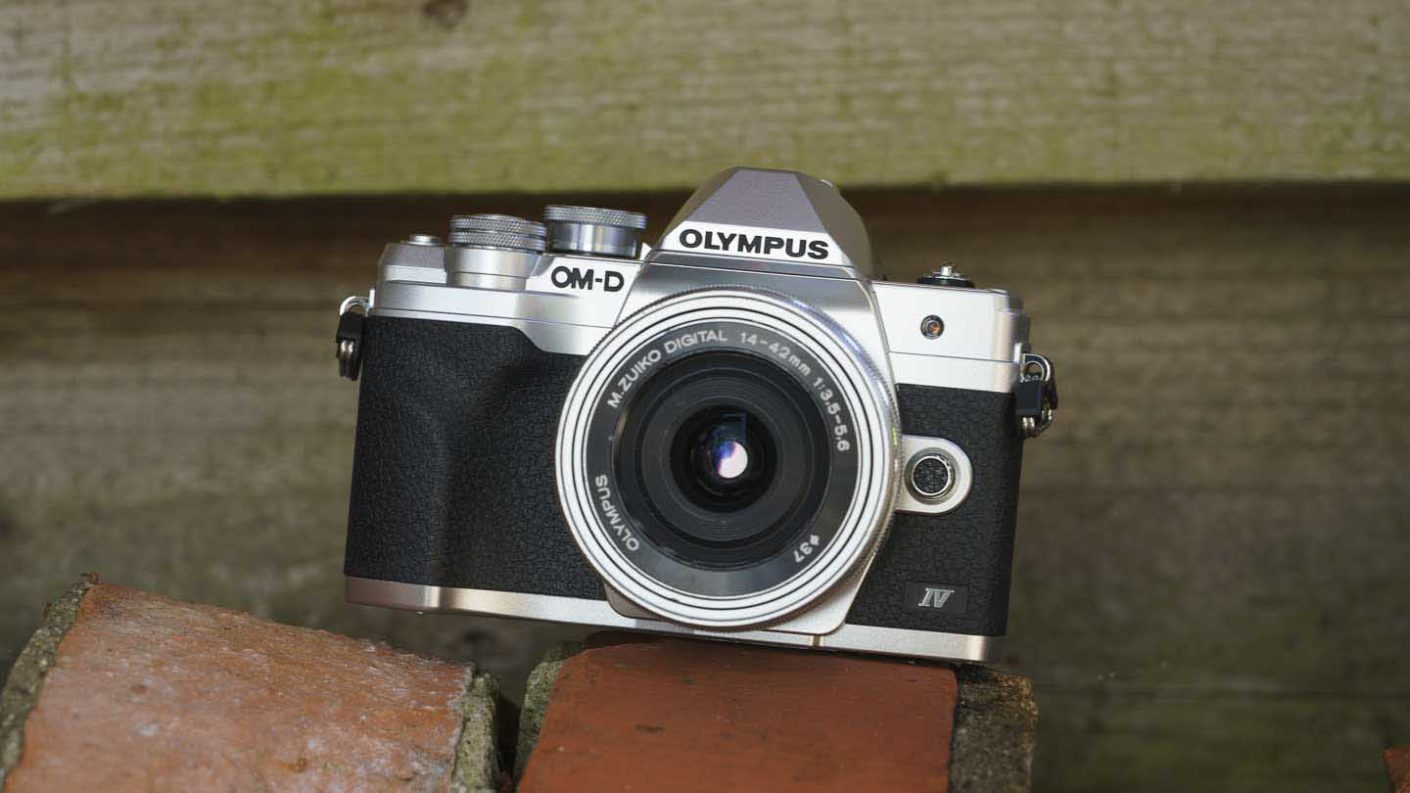
Specification
- Camera type: Micro Four Thirds mirrorless
- Announced: 4th August 2020
- Sensor: Four Thirds Type 20.3Mp Live MOS
- Processing engines: TruePic VIII
- Sensitivity range: ISO 80-25,600
- Viewfinder: 2,360,000-dot electronic with 1.23x magnification and 19.2mm eye point
- Stabilisation: 5-axis with up to 4.5EV shutter speed compensation
- Screen: 3-inch 1,037,000-dot tilting touchscreen
- Focus modes: Manual focus, Single AF, Continuous AF, Single AF + MF, AF Tracking, Super Spot AF, Face Detection AF
- Exposure modes: Programme, Aperture priority, Shutter priority, Manual, Bulb, Time, i-Auto, Scene Modes, Art Filter, Movie, Live Time, Live Composite, Advanced Photo Modes (Live Composite, Live Bulb, Multiple Exposure, HDR Backlight, Silent, Panorama, Keystone Compensation, AE bracketing, AF bracketing)
- Autofocus system: Contrast detection with up to 121 points
- Autofocus point selection modes: All target, Group target (9-areas), Single target
- Exposure metering: 324 zones Multi-pattern Sensing System with ESP, Spot, Centre weighted, Highlight and Shadow mode
- Art filers: Pop Art, Soft Focus, Pale & Light Colour, Light Tone, Grainy Film, Pin Hole, Diorama, Cross Process, Gentle Sepia, Dramatic Tone, Key Line, Water colour, Vintage, Partial Colour, Bleach Bypass, Instant Film
- Shutter speed: 1/16,000-60sec, Bulb to 30mins
- Maximum continuous shooting rate: High: 15 fps Low: 6.3 fps, Max. number of frames: High 42 raw files or 49 (LF) JPGs, Low: 945 raw files or until the card is full with (LF) JPGs
- Video resolution: 4K (3840 x 2160) / 30p, 25p, 24p / IPB (approx. 102 Mbps) Full HD (1920 x 1080) / 30p, 25p, 24p (MOV) Full HD (1920 x 1080) / 60p, 50p / IPB (F,N) / (MOV) HD (1280 x 720) / 60p, 50p, 30p, 25p, 24p (MOV)
- Time lapse: 4k, 1080p, 720p
- Flash: Built-in GN 7.2 (ISO200), hotshoe for external flash
- Connectivity: Wi-Fi, Bluetooth
- Multiple exposure: 2 frames with or without autogain
- Storage: SDHC/SDXC UHS-II
- Dimensions (WxHxD): 121.7x84.4x49mm
- Weight: 383g including battery and SD card
The Olympus OM-D E-M10 Mark IV isn’t much bigger than some compact cameras with much smaller sensors yet it’s much more versatile, has a great collection of features and produces better image quality.
Inside the Olympus E-M10 IV is a 20-megapixel sensor and the company’s TruePic VIII processing engine. Together, these combine to enable an extended sensitivity range of ISO 80-25,600, the native range is ISO 200-6,400.
Olympus has given the E-M10 IV in-body image stabilisation (IBIS) which is claimed to enable images to be captured at up to 4.5EV slower shutter speeds than normal. This system also operates in video mode and it can be augmented with digital stabilisation but using it results in a slight crop in the frame.
Olympus cameras have some great advanced-shooting options, but novice photographers can sometimes struggle to find them. With this in mind and like its predecessor, the OM-D E-M10 IV has an Advanced Photo Mode (AP) setting on its mode dial.
This is used to access Live Composite, Live Time, Multiple Exposure, HDR Backlight, Silent, Panorama, Keystone Compensation, AE bracketing, AE bracketing shooting mode. Live Composite and Live Time mode are particularly noteworthy as they take the guesswork out of long exposure photography by enabling you to see the image build up on the back of the camera.
Overall, the Olympus OM-D E-M10 Mark IV captures a good level of detail and we were very impressed at how well it reproduces colours. The Olympus OM-D E-M10 Mark IV makes a very good first serious camera and it’s capable of achieving good results in a wide number of subjects and conditions.
You can find the best deals on the Olympus OM-D E-M10 Mark IV at Amazon UK and Amazon US.
£699
$649For
- Very compact, yet versatile camera
- Tilting screen can face forwards for selfies and vlogging
- Live Composite and Live Bulb mode make long exposure photography easy
Panasonic Lumix G100
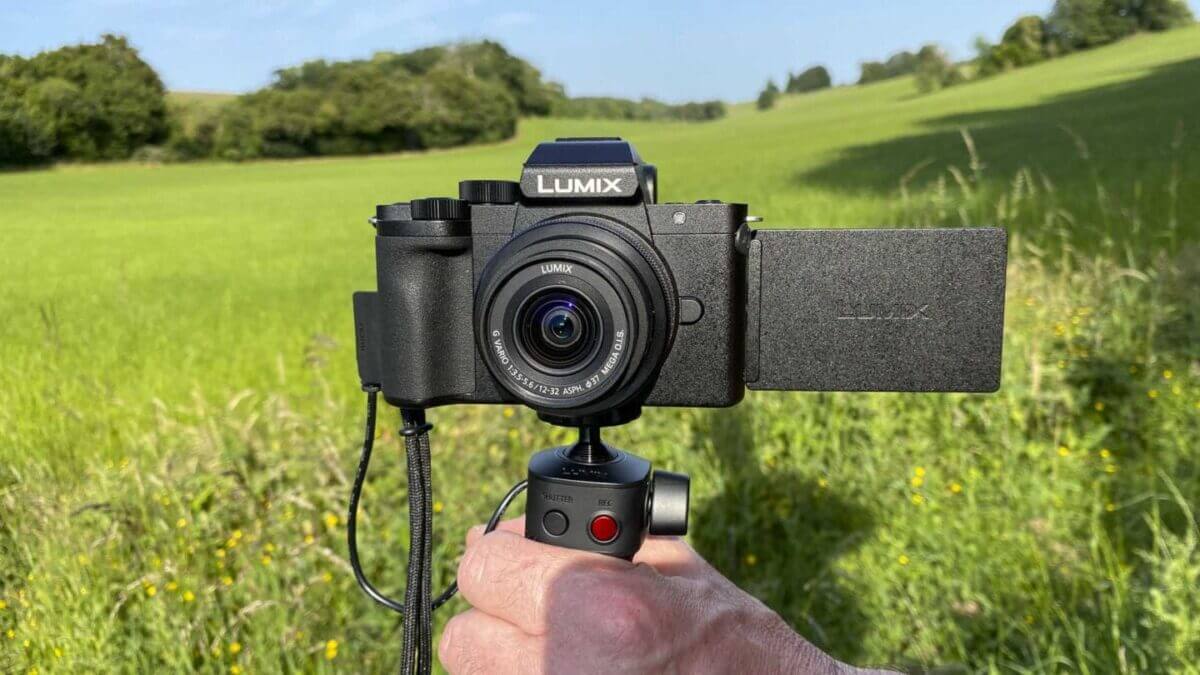
Specification
- Camera type: Mirrorless
- Announced: 24th June 2020
- Sensor: 20.3Mp Four Thirds type CMOS
- Lens mount: Micro Four Thirds
- Screen: 3-inch 1,840,000-dot vari-angle touchscreen
- Viewfinder: 3,480,000-dot electronic viewfinder
- Key video specifications: 4K (3840x2160) at 24,25,30p and 100Mbps, V-Log L and Ozo Audio by Nokia
- Weight: 310g body only, 352g with SD card and battery, 412g with the 12-32mm lens
- Dimensions (WxHxD): 115.6x82.5x54.2mm
Panasonic designed the Lumix G100 as an entry-level vlogging camera but it also makes a good camera for beginner photographers and anyone looking for an affordable camera that can produce great images.
It has a bigger sensor than competing cameras like the Canon PowerShot G7 X Mark III and Sony ZV-1 and benefits from accepting interchangeable lenses, which makes it a bit more versatile. As it’s a Micro Four Thirds camera, the G100 can also accept any of the now huge range of Micro Four Thirds lenses from Panasonic, Olympus and others.
Landscape photographers will appreciate the 3,480,000-dot electronic viewfinder built-in. That’s really useful when the sun is shining on the screen on the back of the camera. It makes it much easier to assess exposure and colour as well as composition.
Overall image quality is great, with images looking noise-free with fine details captured up to ISO 3200, from our tests.
You can find the best deals on the Panasonic G100 at Amazon UK and Amazon US.
£590
$747.99For
- Very compact
- Viewfinder and vari-angle touchscreen
- Clever Ozo Audio by Nokia onboard
Canon EOS Rebel T8i / EOS 850D
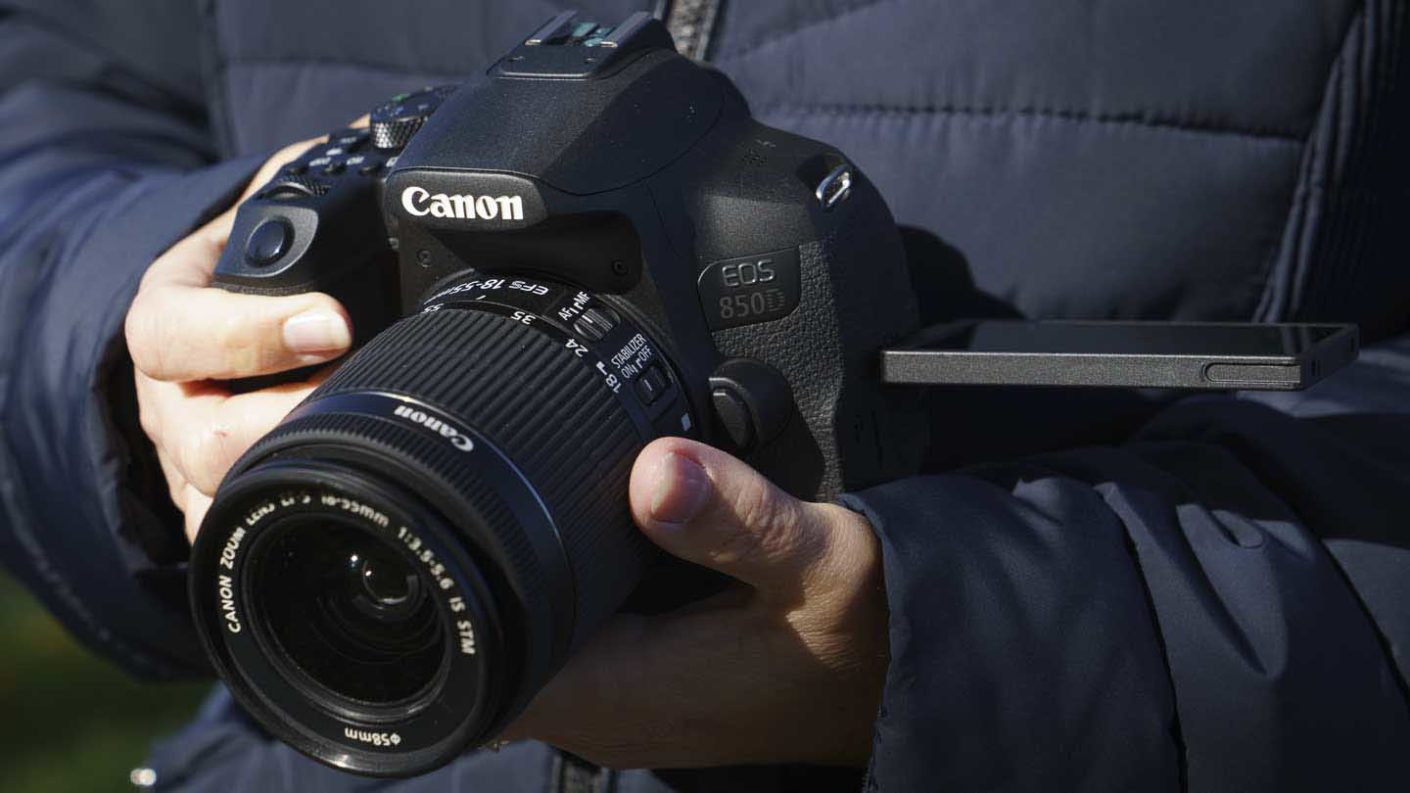
Specification
- Camera type: Digital SLR
- Announced: 13th February 2020
- Sensor: 24.1Mp APS-C (22.3x14.9mm) CMOS
- Processor: Digic 8
- Lens mount: EF/EF-S
- Sensitivity range: Stills: ISO 100-25,600, expandable to ISO 51,200, Movies: ISO 100-12,800 expandable to ISO 25,600
- Autofocus system: Viewfinder: 45 cross-type AF points (45 f/5.6 cross-type AF points, 27 f/8 points (9 cross-type), centre point is f/2.8 and f/5.6 dual cross-type), Live View: Dual Pixel CMOS AF (phase detection) with up to 143 points
- Metering system: Viewfinder: 220,000-pixel RGB+IR sensor, Live View: imaging sensor divided into up to 384 zones
- Viewfinder: Optical pentamirror covering 95% with 0.82x magnification
- Screen: 3-inch 1,040,000-dot Clear View II vari-angle touchscreen
- Built-in flash: GN 12 @ ISO 100 with Integrated Speedlite Transmitter
- Maximum continuous shooting rate: 7fps with viewfinder, 7.5fps in Live View mode
- Maximum video resolution: 4K UHD 3840 x 2160 (25, 23.98 fps)
- Memory: SD/SDHC/SDXC UHS-I
- Battery: Rechargeable Li-ion Battery LP-E17, up to 800 shots with viewfinder, 310 shot in Live View mode
- Dimensions: 131.0 x 102.6 x 76.2mm
- Weight: 515g including battery and memory card
The Canon EOS Rebel T8i / EOS 850D is an attractive sub-£850/$750 DSLR that make a nice budget camera option. Wile its build is plasticky, it’s nevertheless lightweight and easy to carry with a good control arrangement and excellent touch-control. It also delivers very nice images with a good level of detail in a wide range of conditions.
Inside the Canon 850D/8Ti is an APS-C format CMOS sensor with 24.1-million effective pixels. As Canon has used its Dual Pixel CMOS AF design for this sensor, the camera uses phase detection focusing in live view and video mode as well as when the optical viewfinder is used to compose images.
In live view mode there are up to 143 autofocus (AF) points available for selection. If you swap to composing the image in the viewfinder, there are just 45 points, but they are all cross-type with lenses that have a maximum aperture of at least f/5.6, which means they are more sensitive than the standard linear type.
Canon has paired the 8Ti/850D’s sensor with the Digic 8 processing engine. For stills, this combination enables a standard sensitivity range of ISO 100-25,600, which can be expanded to ISO 51,200.
Overall, this might be the best affordable camera for landscape photography you can buy today.
You can find the best deals on the EOS Rebel T8i / EOS 850D at Amazon UK and Amazon US.
£840
$749.99For
- Excellent AF systems
- Vari-angle-touchscreen
- Compatible with a huge range of lenses and accessories
Nikon D3500
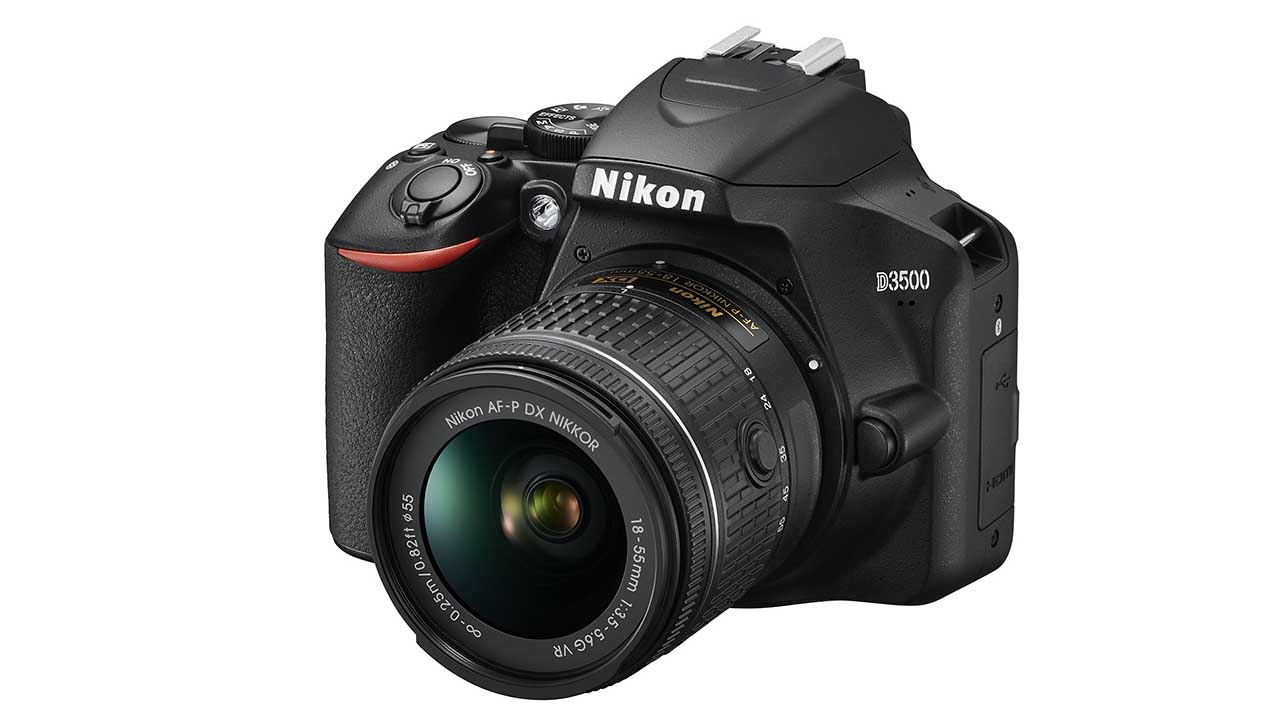
Specification
- Camera type: APS-C (DX) format DSLR
- Announced: 30th August 2018
- Lens mount: Nikon F
- Sensor: 24.2Mp APS-C (23.5 x 15.6mm)
- Sensitivity range: ISO 100-25,600
- Autofocus system: Viewfinder: 11-point with 1 cross-type, Live View: Contrast detection
- Maximum continuous shooting rate: 5fps (frames per second)
- Viewfinder: Optical with pentamirror 95% coverage
- Screen: 3-inch TFT LCD with 921,000 dots
- Storage: SD/SDHC/SDXC UHS-I
- Dimensions: 124 x 97 x 69.5mm
- Weight: 365g body only
While the Nikon D3500 is now listed as discontinued, no successor has been announced and it can still be found on sale.
Inside the D3500’s monocoque body is an APS-C (DX) format sensor with 24.2 million effective pixels. This is paired with an Expeed 4 processing engine and its a combination that’s capable of delivering excellent-quality images.
With just 11 individually selectable points, the D3500 AF system’s specification may seem unimpressive next that of the average mirrorless camera, but it’s fast and capable of getting moving subjects sharp.
As it’s a DSLR, the D3500 has an optical viewfinder so you see a natural view of the scene with no interpretation by the camera. There’s also a fixed 3-inch screen with 921,000 dots on the back of the camera which can be used to compose images in Live View mode (as well as review them), but the Live View autofocus system is quite sluggish.
One of the main selling points of the Nikon 3500 for beginners is its excellent Guide Mode that teaches the user about photography and the camera controls using non-techy language.
£479
$596For
- Excellent 24Mp APS-C format sensor
- Superb guide mode that teaches you about photography
- Compatible with an extensive range of lenses and accessories
Fujifilm X-A7
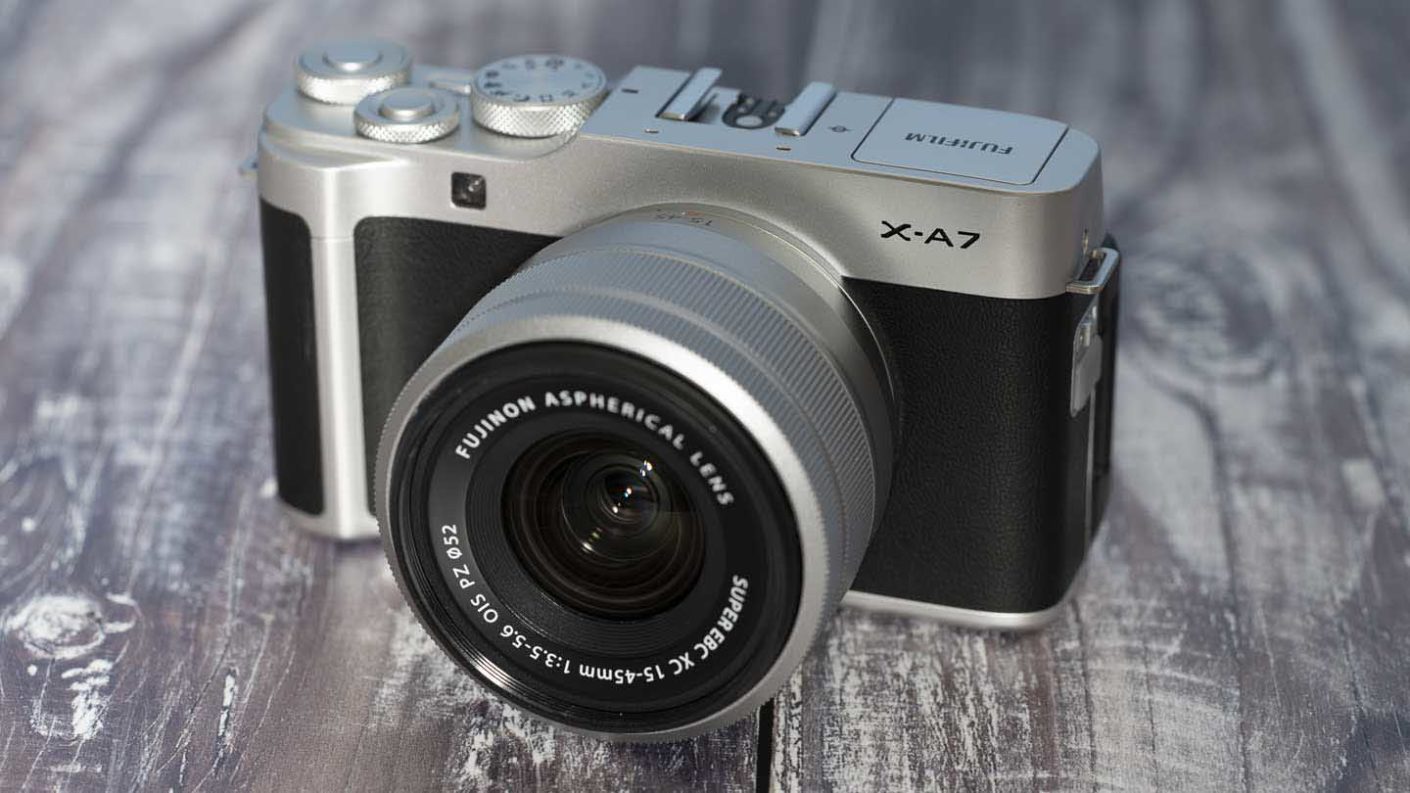
Specification
- Camera type: Mirrorless
- Effective pixel count: 24.2 million
- Sensor: APS-C format (23.5 x 15.7mm) CMOS with primary color filter
- Lens mount: Fujifilm X
- Sensitivity range: ISO 200-12,800 extendable to ISO 100-51,200
- Maximum continuous shooting rate: 6fps
- Maximum video resolution: 4K (3840 x 2160) at 29.97P/25P/24P/23.98P for up to 15 min
- Viewfinder: None
- Screen: 3.5inch 2,760K-dot vari-angle type TFT colour LCD touchscreen with 16:9 aspect ratio
- Exposure modes: Advanced SR Auto, program, aperture priority, shutter priority, manual, Scene (Portrait / Night / Fireworks / Sunset / Snow / Beach / Party / Flower / Text / Multiple Exposure / Light Trail)
- Storage: SD/SDHC/SDXC UHS-I
- Dimensions (WxHxD): 119.0 x 67.7 x 41.1mm / 4.7 x 2.7 x 1.6-inch
- Weight: 320g / 11. oz. (including battery and memory card), 271g / 9.6 oz. (excluding accessories, battery and memory card)
The X-A7 sits at the bottom of Fujifilm’s range as its most entry-level camera, but it punches well above its weight. It’s a stylish camera with great build quality, offering a mode dial on its top-plate and dual adjustment dials. There’s also a clever ‘Smart Menu’ that makes adjusting some of the key parameters.
Inside the X-A7 is a 24.2-megapixel APS-C format sensor that delivers improved noise control at higher sensitivities thanks to copper wiring in the sensor that provides faster data readout.
In our tests, the Fujifilm X-A7 controls noise well for much of its ISO range. The colours and contrast that Fujifilm cameras capture in their various Film Simulation modes is on wonderful display here, and you’ll get some beautiful landscape scenes with this camera.
Entry-level cameras like this one aren’t supposed to have every feature currently available. They are supposed to be an affordable introduction to photography. They should enable you to capture nice images, better than you can get from a phone, and fire your interest in capturing the world around you. In this regard, the X-A7 succeeds at all levels.
You can find the best deals on the Fujifilm X-A7 at Amazon UK and Amazon US.
£699
$699For
- Good build quality for the price
- Excellent image quality and attractive colours
- Vari-angle touchscreen
Sony A6100
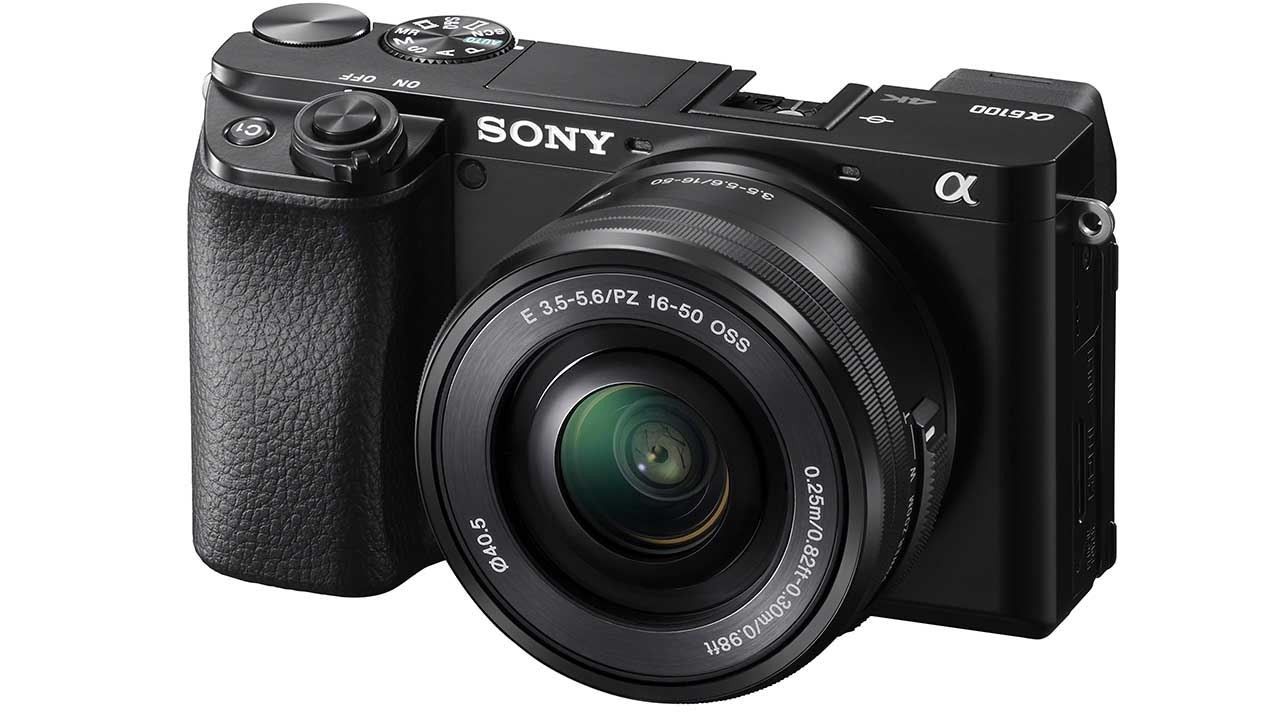
Specification
- Sensor: 24.2MP Exmor CMOS image sensor
- Video: 4K movie recording with full-pixel readout
- Screen: 180-degree tiltable, 3.0-type 921k-dot LCD touch screen
- Autofocus: 425 phase-detection and 425 contrast-detection AF points
Aimed at beginner photographers, the Sony A6100 offers plenty of room to grow. Its impressive feature set nearly matches the fellow APS-C format Sony A6600.
Like its sibling, it boasts internal 4K movie recording in Super 35mm format with full pixel readout without pixel binning, to capture approximately 2.4x the amount of information required for 4K movies. Budding videographers will also appreciate the integrated microphone input and built-in interval shooting.
Again, like the A6600, the A6100 incorporates a 24.2MP Exmor CMOS image sensor, the latest BIONZ X image processor and a front-end LSI. AF acquisition is lightning fast at 0.02secs via its 425 phase-detection AF points covering approximately 84% of the image area and 425 contrast-detection AF points.
Sony’s Real-time Tracking and Real-time Eye AF modes are also on-board, delivering faster and more accurate AF performance when photographing humans and animals.
£830
€900For
- Real-time Tracking and Eye AF
- 4K video
- Very fast AF

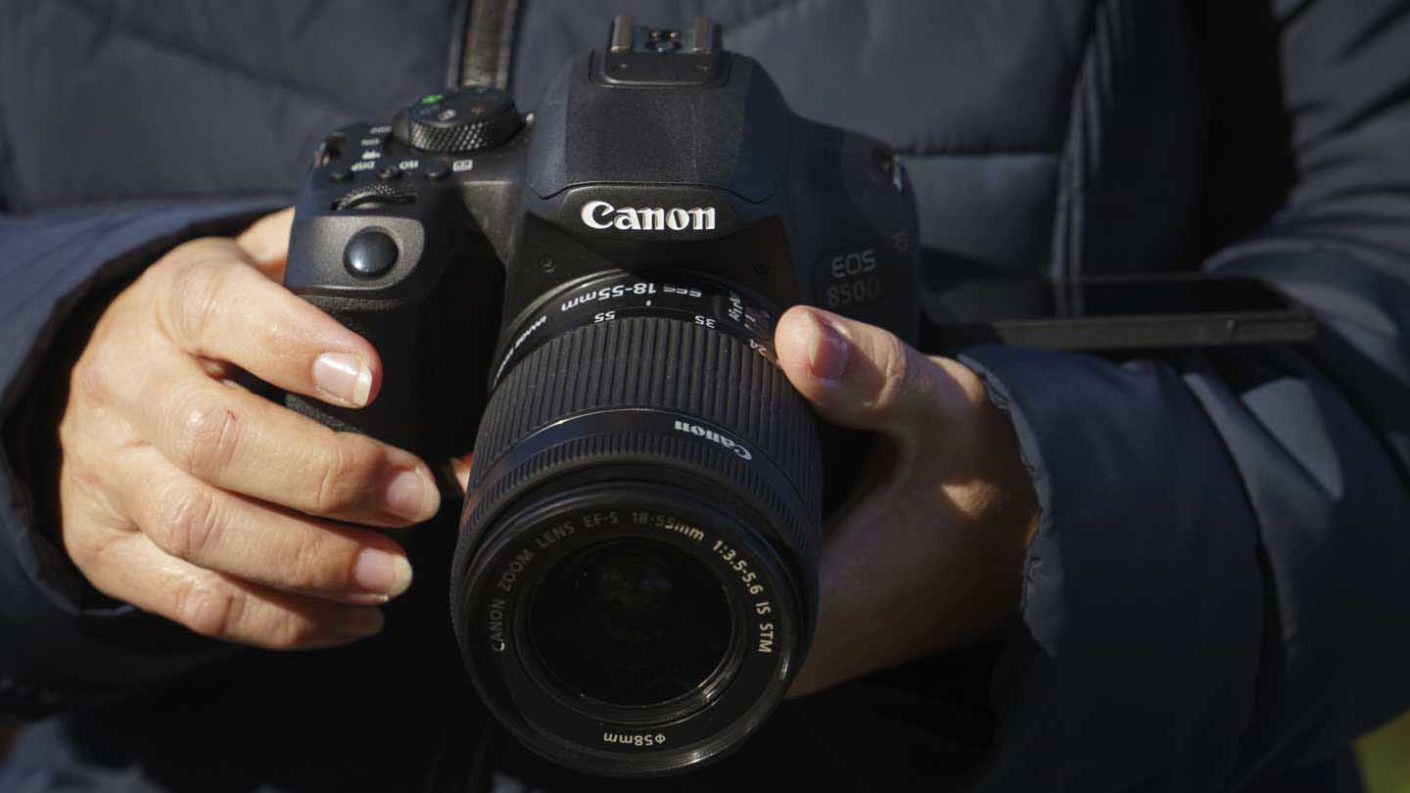



Leave a Reply
You must be logged in to post a comment.